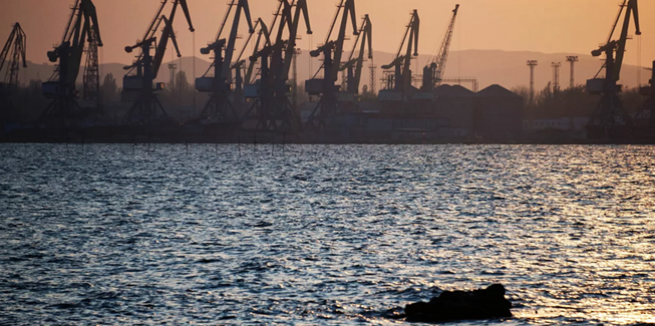The optimism expressed by the U.S. President regarding the potential impact of the “Economic Corridor” agreement between India and Europe on the Middle East region appears well-founded. However, if this project becomes a reality in the near future, it may not necessarily bring stability and prosperity to the region, as Joe Biden hopes. Instead, it is likely to reshape the geopolitical landscape, though not necessarily in favour of Syria. The earnest pursuit of such a project could further solidify Syria’s current status as a battleground for settling regional and international conflicts, leaving political and economic solutions elusive. In all likelihood, Syria’s strategic importance will rise as it becomes a focal point for competing regional and global initiatives.
Some may attempt to downplay the significance of the “corridor” project, considering it mere political rhetoric aimed at diverting India, Saudi Arabia, and the UAE away from China. Critics may argue that the high financing costs and economic feasibility challenges make the project impractical. They may invoke the well-established principle in the shipping sector, where sea freight is typically more cost-effective than land freight, including rail transport. In the case of the “corridor” project, unloading cargo from large ships to load it onto railways and then reloading it onto other ships could make sea shipping through the Suez Canal a more economical choice.
“Won’t Grow Tired; Won’t Rest”: Suweida Demonstrators Continue to Protest for 30th Day
This assessment could have been entirely accurate if the project had been limited to transporting goods via a maritime route from India to the UAE, followed by a land railway route through the UAE, Saudi Arabia, southern Jordan, and ending on the Israeli coast. Another maritime route would then extend to Greece, branching into the rest of Europe. In this scenario, sea shipping via the Suez Canal would remain economically viable. However, the project encompasses a more ambitious vision, involving the transmission of renewable electricity, clean hydrogen, digital data, and even oil and gas through pipelines. This presents a potential revolution in energy security and digital connectivity between East and West, overshadowing competing historical projects, some of which had Syria as a theoretical passageway. Iran and Turkey had significant stakes in these.
Given that Iran stands to be the most affected by the project, as it has invested heavily in becoming part of the Chinese “Belt and Road” initiative, focusing on implementing the “corridor” project through its Jordanian route becomes a strategic imperative for Iran. This development would elevate the smuggling of drugs and weapons from southern Syria into Jordan beyond mere financial gain for the Assad regime and Iran. It could become a strategic tool to destabilize Jordan, a key link in the planned project. Meanwhile, Turkey, isolated from the “corridor” project, may find itself increasingly drawn toward an alliance with Iran and Russia. The alternative project of “linking the Gulf to Turkey” via Iraq is unrealistic, as it traverses Iranian spheres of influence, subjecting it to Tehran’s control.
While the U.S. is eager to initiate the project within a year to counter China’s growing influence, Europe emerges as one of the primary beneficiaries. It stands to reduce its dependence on Chinese supplies and enhance energy security. India aims to demonstrate its ability to serve as a manufacturing and supply alternative to China or at least a formidable competitor. Saudi Arabia and the UAE are positioning themselves for a future marked by clean energy and digital development.
In the midst of this ambitious endeavour, Syria finds itself at the periphery. Bashar al-Assad, only 12 years ago, had placed Syria at the center of numerous commercial corridors and competing pipelines. However, he later excluded Syria from these initiatives. His regime justified its brutal war against the Syrian people by claiming it was protecting the interests of Russia and Iran, who opposed energy transfer projects from the Gulf through Syria to Europe. Iran is likely to escalate threats to Jordanian national security from southern Syria to disrupt the “corridor” project. The establishment of a secure zone in southern Syria may become a geostrategic necessity for the U.S. and its regional partners. When this reality takes shape, the regime’s ideologues may assert that they had warned of a “conspiracy” to separate the south from Syria, ignoring the fact that Syria’s transformation into a battleground for regional conflicts, favouring Iran, inevitably led to this outcome.
This article was translated and edited by The Syrian Observer. The Syrian Observer has not verified the content of this story. Responsibility for the information and views set out in this article lies entirely with the author.


